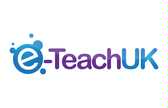

Top 35 Articles on eLearning Strategy. Ten Pedagogic Principles for E-learning. The Observatory is intended to highlight evidence in the area of innovation in education, especially: statistics evidence (e.g. Survey of Schools: ICT in Education)evidence from practice (and policy)evidence from research (e.g. literature review on the KeyCoNet project)Findings from surveys of end users in schools. European Schoolnet Observatory is primarily designed to provide evidence about the use of technology to improve teaching and learning for decision makers in Ministries of Education, practitioners in schools and other ICT in education professionals at national, regional or local level across Europe.
Explore the Observatory's four areas Briefing Papers European Schoolnet Observatory is currently working on a series of Briefing Papers to present the findings of the Survey of Schools: ICT in education on a specific topic and related them to the results of European Schoolnet projects on the topic. Find out more ► Observatory Blog Country Reports on ICT in education Find out more ► Action mapping: Design lively elearning and training. Online Learning. Students and Information Technology 2012 #edtech #eLearning #educause. The Educause Centre for Applied Research (ECAR) has recently published their “ECAR Study of Undergraduate Students and Information Technology, 2012” report.
The report summary has the following key points and recommendations: Key Findings Blended-learning environments are the norm; students say that these environments best support how they learn.Students want to access academic progress information and course material via their mobile devices, and institutions deliver.Technology training and skill development for students is more important than new, more, or “better” technology.Students use social networks for interacting with friends more than for academic communication.
ECAR Recommends Look to emerging or established leaders (other institutions, other countries, other industries) for strategies to deliver instruction and curricular content to tablets and smartphones. Click to view the complete Educause Infographic Some figures from the Infographic: How To Write Compelling eLearning Content Without Being An Expert. How To Write Compelling eLearning Content Without Being An Expert We know that creating learning content that's clear and concise is a no-brainer. But creating content that influences, motivates, engages and compells is not often a simple task to accomplish. The good news is you don’t have to be an expert to craft effective eLearning content. You only have to understand the basics well and execute it.
But what are the basics anyway? In terms of eLearning, compelling content is one that grabs and holds the attention of your learners. It naturally makes learners motivated to finish what they’ve started. Now here’s the basics: Know Who Your Learners Are Don’t be content with vague ideas of who your learners might be. Package Your Content Properly Design or package your content in a way that pleases the eyes. You have to help learners scan the page (because they are going to anyway). Write Like a Journalist Once you get all these details, write down the lead or introduction.
Brevity is best.